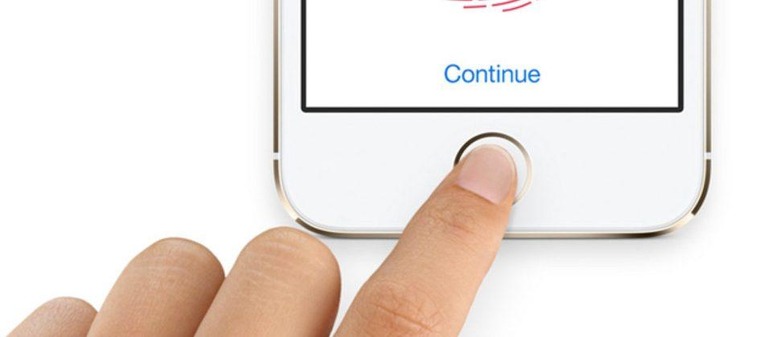iPhone 8 Touch ID panic button tipped in new Apple patent
Apple is working on turning its biometric sensor into a secret panic button, with Touch ID potentially being used to send out a cry for help if you're getting mugged. Detailed in a freshly published patent, granted to Apple earlier this week, the so-called "Biometric Initiated Communication" method relies on the ability of the fingerprint sensor to differentiate not only between different fingertips but how they make contact. It could potentially mean the iPhone 8 is able to use Touch ID as another input option.
As Apple's patent, filed in March 2013, explains it, the system relies on the touch processing module the company uses to read the whorls of a finger. On the one hand, "the module may acquire fingerprint data from the user's input and analyze the data to determine if the input was entered with a particular finger or finger sequence." That, for instance, might mean that using the forefinger of your left hand could trigger something different to using the same finger on your right hand.
However, "the module may also acquire timing data" Apple continues, checking to see if "a particular timing or cadence" is used. Tapping your fingertip three times in a row, perhaps, might be recognized as a panic alert trigger. Apple also discusses using force data – the pressure with which you push the Touch ID sensor – to differentiate between inputs.

It's an interesting route to expanding the usefulness of a single button, though of course it also relies on users remembering exactly what each pattern or level of pressure relates to on the device. As we saw with HTC's U11, which has pressure sensors embedded down the lower sides of the phone, it can be worth starting out conservatively when it comes to new methods of input. HTC currently differentiates between just two squeezes with the Android smartphone, though has left the door open for further modalities down the line as users get more comfortable with the concept.
While the potential for such a supercharged Touch ID sensor is wide, Apple specifically calls out its possibilities for personal safety. A certain pattern or pressure – or combination of the two – could be used "to call emergency services without that fact being known to an assailant or other aggressive person that prompted the emergency call," the patent suggests. At the same time, the iPhone might append GPS location data to the alert message, or even begin streaming audio and video to make a record of what was going on.
Alternatively, the gesture could be a dead-man's switch of sorts. The right input could trigger an iPhone to wipe itself of personal data, for instance: not something you'd want to happen by mistake, but potentially useful if your device was about to be seized or stolen and you wanted all of your files and credit card details removed. Given the recent furore over what US customs and immigration services can and can't access, legally, on your smartphone, that might be of interest to privacy-minded frequent travelers.
As with any patent, mind, there's no guarantee that what's discussed as a possibility will ever graduate into an actual product. Nonetheless with so much attention this year on what, exactly, Apple will do with the Touch ID sensor given the iPhone 8 looks set to oust it from its familiar spot under the touchscreen, adding functionality might not be too far fetched.
MORE Apple patent
